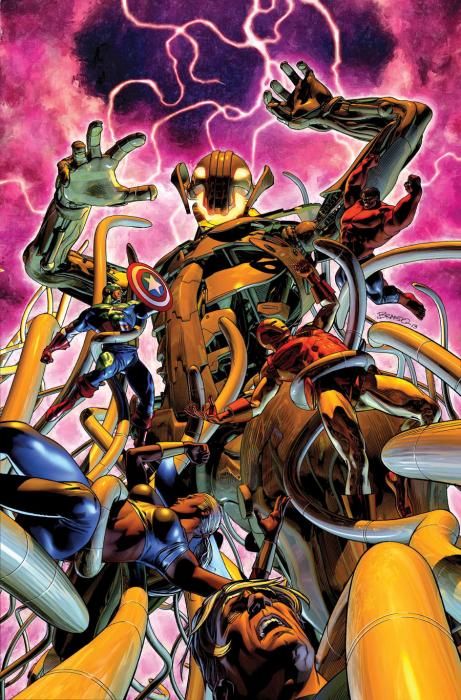"Age of Ultron" has been a wild, dizzying and unpredictable roller coaster ride that has careened across the world, through time, into multiple alternate realities and back. With "Age of Ultron" #10, writer Brian Michael Bendis brings this epic continuity-bending tour to a satisfying and mind-blowing conclusion.
Previous "Age of Ultron" issues might have induced plenty of cases of mental whiplash and multi-dimensional motion sickness, but Bendis stays on the track for the final chapter, focusing on story points previously established and staying with them as they play out. The story progresses in a remarkably familiar fashion -- at least to readers who remember Bendis planting the seeds of this series over two years ago in "Avengers" #12.1. The early pages of this issue are actually reprinted from that original story with a few important tweaks. What might seem like a cheap ploy to pad out the page count, however, is actually a welcome reminder of how this series began in the first place. With the origins of the storyline now restated to all readers, the sequence nicely sets up the rest of the issue as it rolls to its conclusion.
(Oh, and it also ties into Bendis' and artist Alex Maleev's "Moon Knight" series from a couple of years back, where the head of Ultron was an important part of that storyline.)
However, with a team of artists that's nearly as numerous as any given NFL team's offensive line, there's an inconsistency that always comes with a roster of diverse pencilers. For example, Bryan Hitch and Paul Neary's typically clean and detailed look is a jarring transition from Alex Maleev's darker and grittier style. It's not unforgiveable, as all of the artists are among the industry's best -- in fact, this kind of collaboration has largely become the norm for extra-sized issues -- but there's an artistic switch every several pages, and it's a disruption that's akin to a case of the hiccups; it happens just often enough to be an annoyance.
While Bendis wraps up the story admirably, it's the pleasantly-lengthy epilogue where minds in comic shops everywhere will ultimately be blown. Spoilers abound regarding the return of an otherwise-unexpected character at story's end, but there are plenty of other surprises. Among them, the extent of the damage to the fabric of reality caused by Wolverine's time hopping; an extent that might reach further than many might expect. Bendis pulls off the kind of way-cool surprises that can bring forth the inner twelve-year-old of anyone who calls themselves a Marvel fan.
That's the magic of this story's final chapter. The usual arguments can be made about the typical continuity-altering storyline regarding its marketing-driven origins, decompressed manner of storytelling and event-driven vs. character-driven plot. But critical commentary side, Bendis has successfully done what every comic publisher and creator can and should strive for: he has made this story's end plain and simple fun that evokes a kind of child-like wonderment.

